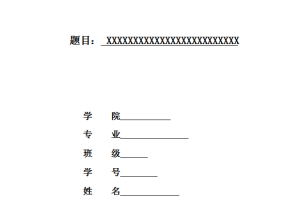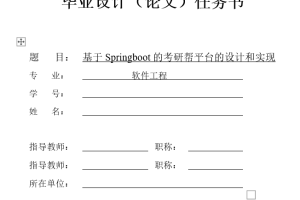摘 要
鱼眼镜头是一种极端的广角镜头,由于这种镜头的镜片直径且呈抛物状向前方凸出,看上去和鱼眼十分相似,因此,在大多数情况下被称为鱼眼镜头。这种镜头的光学性能比较特殊,其焦距小于或者等于16mm,视觉范围大于180°有时甚至可达270°,这种范围远远超出了人眼所能达到的极限范围。然而这种镜头也有着明显的缺点,透过镜头观察到的实物图像与真实事物之间有着较大的差异,这就是经常所说的镜头畸变,这种畸变的存在所导致的后果就是,图像无法满足人们正常的视觉要求。这就要求对鱼眼镜头参数进行分析计算。
由于鱼眼镜头是一个跨学科的研究课题,涉及到光学、通信等各方面的相关知识,有着较大的科研价值,同时也有着较大的应用市场和发展前景。通过查阅研究大量国内外鱼眼镜头的相关文献,本论文简要阐述了镜头标定的算法,包括传统的镜头标定算法和相机自标定方法,及不同标定方法的优缺点。其次,在现有的标定方法中,重点研究了张正友标定算法,这种技术只要求相机从不同的方向(至少两个)观察几个显示的平面图像,观察过程中要求相机或平面图形可以自由移动,移动形式不需要知道,但会产生镜头的径向畸变。包括一个封闭形式的解决方案,其次是基于最大似然准则的非线性优化。计算机仿真和实测数据已经被用来检测这种技术,并已取得了很好地成果。最后根据现有的标定方法,设计较为合理的标定算法,并进行实际的检验,与已有的方法获得的结果相比较,确定这种算法可以正确使用
关键词:鱼眼镜头;镜头畸变;镜头标定算法
ABSTRACT
Fisheye lens is an extreme wide-angle lens, the lens and the lens diameter parabolic shape to pull out in front, look like the fish eye, therefore, in most cases it is called fisheye lens. Optical properties of the lens is special, its focal length is less than or equal to 16mm, the visual range is greater than 180 degrees and sometimes up to 270 degrees, the range is far beyond the limits that the human eye can reach. However, this camera also has obvious shortcomings, there is a great difference between the real image and the reality through the lens of the camera is observed, which is often referred to as the lens distortion, resulting in the distortion of the consequence is that the image can not satisfy the people’s normal visual requirements. This requires the fisheye lens parameters are analyzed and calculated.
The fish eye lens is an interdisciplinary subject, relating to the various aspects of knowledge like optical,communication etc., having great research value, and it also has great application market and development prospects. Through the relevant literature review of a large number of domestic and foreign fisheye lens, this paper briefly describes the camera calibration algorithm, including the traditional camera calibration algorithm and camera self calibration methods, and the advantages and disadvantages of different calibration methods. Secondly, in the existing calibration method, I focuse on the research of Zhang Zhengyou calibration algorithm, this technique only requires the camera from different directions (at least two) observes planar image displayed, free mobile camera or graphic in the process of observation, moving form does not need to know, but it will produce the lens radial distortion. Includes a closed form solution, followed by nonlinear optimization based on the maximum likelihood criterion. Computer simulation and experimental data have been used to test the technology, and has achieved good results. Finally, according to the existing calibration method, I will design a more reasonable calibration algorithm, and putting on the actual test, compared with the existing results, to determine this algorithm can be used correctly.
Key words:Fisheye lens;Lens distortion;The camera calibration algorithm;
目 录
第一章 绪论………………………………………………………………………………………………… 1
1.1课题研究的背景及意义…………………………………………………………………………………….1
1.2鱼眼镜头研究的现状…………………………………………………………………………….. 2
1.3研究所存在的问题………………………………………………………………………………… 3
1.4课题的来源和主要研究内容………………………………………………………………….. 3
第二章 鱼眼镜头的结构及原理………………………………………………………………. 5
2.1鱼眼镜头的结构……………………………………………………………………………………. 5
2.2鱼眼镜头的成像原理…………………………………………………………………………….. 6
2.3坐标系及针孔成像模型…………………………………………………………………………. 7
2.3.1坐标系的介绍……………………………………………………………………………… 7
2.3.2真空成像模型……………………………………………………………………………. 10
2.4鱼眼视觉系统模型……………………………………………………………………………….. 11
2.4.1鱼眼视觉系统几何及数学模型……………………………………………………. 11
2.4.2鱼眼视觉系统畸变模型……………………………………………………………… 13
第三章 镜头的参数标定算法…………………………………………………………………. 15
3.1摄像机标定及分类………………………………………………………………………………. 15
3.2利用透视变换矩阵的摄像机标定方法………………………………………………….. 16
3.3Tsai的两步法……………………………………………………………………………………… 17
3.4基于成像模型的标定方法……………………………………………………………………. 18
第四章 基于平面(2D)靶标的张正友标定算法……………………………….. 20
4.1基本方程…………………………………………………………………………………………….. 20
4.2内参数约束条件………………………………………………………………………………….. 21
4.3标定基本原理……………………………………………………………………………………… 21
4.3.1密切相关形式的解决办法………………………………………………………….. 22
4.3.2最大似然估计……………………………………………………………………………. 22
4.3.3处理径向畸变……………………………………………………………………………. 23
4.4相机标定的步骤………………………………………………………………………………….. 23
4.5总结……………………………………………………………………………………………………. 24
第五章 实验设计及结果分析…………………………………………………………………. 25
5.1OpenCV介绍……………………………………………………………………………………….. 25
5.2实验过程…………………………………………………………………………………………….. 25
5.3实验结果分析……………………………………………………………………………………… 29
5.4本章小结…………………………………………………………………………………………….. 36
结束语…………………………………………………………………………………………………………… 37
致谢……………………………………………………………………………………………………………….. 38
参考文献………………………………………………………………………………………………………. 39



